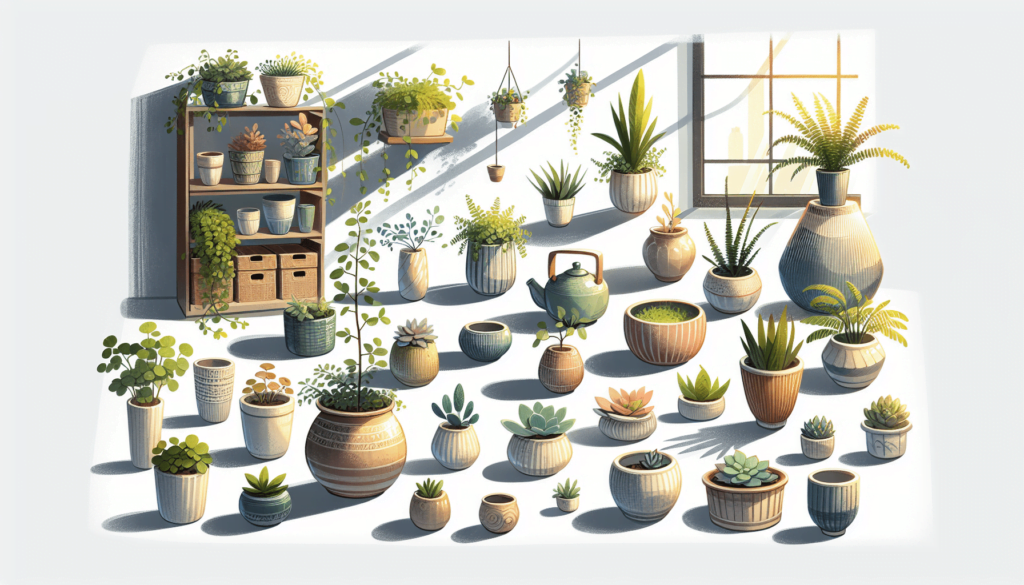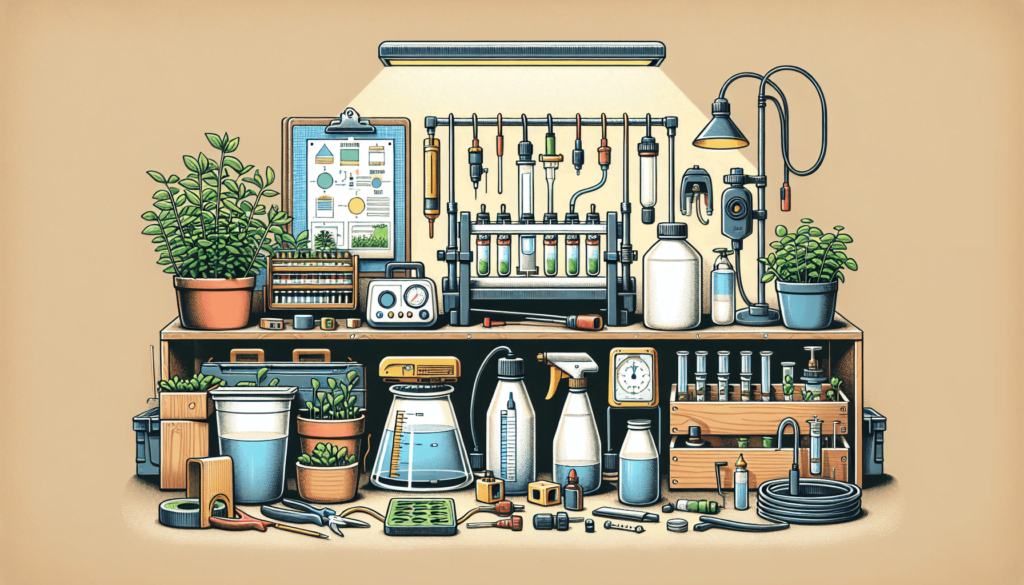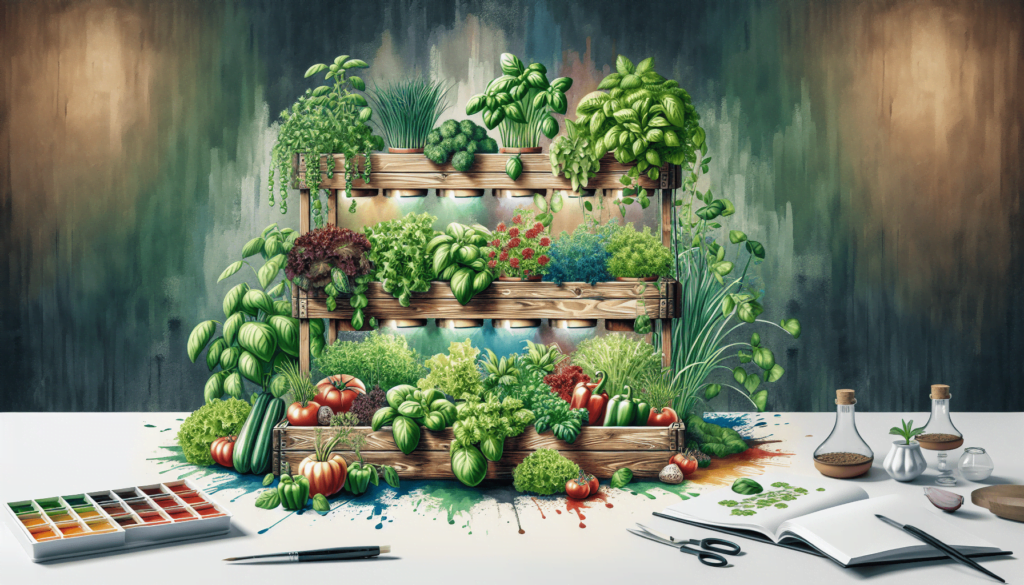Imagine you’re having a leisurely Sunday, sipping your favorite cup of tea, and deciding to embark on a delightful journey through the myriad wonders of indoor gardening. Suddenly, the perplexing question arises: how do we choose the right containers for our little green friends? In “The Ultimate Guide to Choosing Containers for Your Indoor Gardening Adventures,” we’ll unravel this conundrum with a pinch of humor and a whole lot of knowledge, all styled to resonate with hydroponic home gardeners like us. Not only will this guide provide practical insights, but it also paints a vivid picture of how the right containers can vastly improve your gardening endeavors, turning routine plant care into a fulfilling adventure. Trust us, this isn’t about just holding dirt and water; it’s about giving your plants a nurturing home where they can thrive and add unmatched beauty to your living spaces. Let’s embark on this journey together!

Understanding the Essential Role of Containers in Indoor Gardening
Did you know that this inanimate object lying around your living room is probably more influential to your indoor plant’s success than you realize? Yes, we’re talking about containers for indoor gardening. Not only do they hold the soil and the plant, but they also contribute significantly to your plant’s growth and your indoor aesthetics.
Exploring the importance of choosing the right pot for your plants
Selecting the right pot for your plant isn’t just about how lovely it will look in the corner of your indoor space. It’s deeper than that—quite literally! The size, depth, material of the container, and whether or not it has proper drainage can dramatically affect how well your plant will thrive.
The effect of container type on plant growth
When you think of container type, picture your plant as Goldilocks. The container can’t be too small or too big, too shallow or too deep—but just right. The type of container impacts your plant’s root development, water retention, temperature control, and overall health.
How pots can enhance your indoor garden aesthetics
Don’t forget that your pot isn’t just a workhorse for plant health—it can be a showstopper too! With a variety of materials, sizes, and designs available, the pot you choose can seamlessly blend with your home decor or serve as a stunning focal point.
Identifying Your Indoor Gardening Needs
It’s easy to get carried away with all those beautiful, glossy pictures of indoor plants in perfect containers. But before we jump aboard the shopping spree train, let’s take a pause and assess what our indoor gardening needs really are.
Assessing the type of plants you want to grow
Do you want to plant succulents that have minimal water needs, herbs for your culinary adventures, or tropical plants that add a lush appeal? The type of plant you choose will dictate the type of container required.
Evaluating the environmental conditions of your indoor space
Does your indoor space get a lot of sunlight, or is it mostly shady? Is it humid or dry? The environmental conditions of your space provide vital clues to the type of container that would be best for your indoor garden.
Considering growth rate and size of your plants
Are your chosen plants slow graders that take a leisurely time to grow or fast-growers that need frequent repotting? When you consider the growth rate and potential size of your plants, you can choose containers that will allow them to flourish.
Comparing Various Types of Indoor Gardening Containers
So, are you now excited to become aware of the realm of containers that exist out there? Let’s dive into it!
Assess the advantages and disadvantages of plastic containers
Affordable, lightweight and a myriad of choices—plastic pots might seem like an ideal choice. But, don’t forget they can degrade over time, and their light weight might not be the best bet for top-heavy plants.
Learn about the benefits and drawbacks of clay pots
Clay pots—a timeless choice that offers excellent drainage and temperature control for your plants. Yet, they can be heavy to move around and may dry out quicker than other pot types due to their porous nature.
Uncover the uniqueness of ceramic containers
Ceramic pots provide a visual appeal that can enhance any space, but make sure you’re ready for a workout since they can be quite heavy. Also, remember that your plant’s watering needs might increase due to the material’s porous nature.
Discover the features of glass containers
Glass containers can add an elegant touch to your indoor gardening, especially if you’re into water-based plants or terrariums. However, these containers may not be the best choice for plants that require excellent drainage.
Cracking the Code—Container Size and Its Impact on Plant Growth
This is where things become a little scientific, but don’t worry! We’ve got you covered.
Understanding the correlation between container size and root development
Just like humans need room to grow, so do plant roots. If the container is too small, the roots can become constricted, leading to stunted plant growth. However, a pot too big can result in overwatering and root rot.
Importance of choosing the right container size for various plant types
Different plant types have different root structures and growth rates. For instance, a small, slow-growing succulent can thrive in a small container for years, while a fast-growing herb might need repotting each season.
How to determine the perfect container size for your plant
So, how big is big enough? A general rule of thumb is choosing a container that is 1-2 inches larger in diameter than the plant’s root ball. But remember, the best person to decide the perfect size is—you guessed it—your plant!

Importance of Drainage in Indoor Gardening Containers
Are you ready to dive into one of the most critical aspects of indoor gardening containers? Let’s get our feet wet with the topic of drainage.
Understanding how lack of proper drainage can harm your plants
Imagine wearing soaking wet shoes all day. Sounds uncomfortable, right? Similarly, plants sitting in waterlogged soil can develop root rot—a death sentence for many plants.
Exploring various types of containers with built-in drainage options
Thankfully, many pots come with built-in drainage holes. And if not, there are other options like self-watering pots or pots with removable plugs—even DIY hacks!
How to create efficient drainage in your existing containers
If you have containers without drainage, no worries! You can create a drainage layer using pebbles or activated charcoal at the bottom of the pot.
Exploring the World of Decorative Containers
After getting our hands dirty with the nitty-gritties of containers, how about we indulge in some home decor fun!
Adding visual interest to your indoor garden with stylish containers
Decorative containers can add a dash of your unique personality to your indoor garden. From rustic wooden crates to sleek metal pots, there are limitless ways to spice up your green space based on your style.
How to balance function and aesthetics in container selection
While it’s great to select eye-catching pots, it’s essential to remember to balance aesthetics with function. An intricately designed glass pot might look stunning, but it may not be the best choice for your water-sensitive succulent.
Where to find unique and beautiful containers for indoor gardening
From thrift stores to online marketplaces, and even your own garage—beautiful and unique containers are just a decision away.
Materials Matter: Choosing Between Natural and Synthetic Containers
Rock, paper, scissors—it’s not just a game; it’s about making choices.
Analyzing the benefits and drawbacks of natural material containers
Natural materials like terracotta or stone have a rustic appeal and excellent breathability, but they can break easily and might require frequent watering.
Assessing the pros and cons of synthetic material containers
Synthetic materials like plastic or resin are durable and lightweight, but they may not offer the same breathability as natural materials and can degrade over time.
Making sustainable choices in indoor gardening containers
Choosing recycled or sustainably sourced materials can make your green thumb even greener. Maintaining a garden isn’t just about nurturing plants, but also honoring Mother Earth.
How to Clean and Reuse Indoor Gardening Containers
Cleanliness is not just for your hands but also for your pots!
The importance of cleanliness in containers for indoor gardening
Dirty containers can spread disease and pests to your beloved plants. Who wants that, right?
Step-by-step guide on how to clean different types of containers
Each type of pot will have different cleaning requirements. While most pots can be cleaned with some good old soapy water, some may require gentle scrubbing or soaking.
Tips for reusing and recycling your gardening containers
Save money and be kind to the earth by reusing and recycling your containers. Just make sure they’re cleaned thoroughly before introducing a new plant.
Hacks for Maximizing Small Spaces with the Right Containers
Gardening in a compact space? No worries—we’ve got you covered!
Multipurpose containers for those with limited space
Choose containers that can multi-task—like plant pots that can double as storage, or tables with built-in planters.
Design hacks for small indoor gardens using containers
Use vertical spaces, stack containers—get creative with your space! It’s just like a puzzle waiting to be solved.
Saving space with vertically stacked and hanging containers
Hanging planters or vertically-stacked pots can help create a lush garden without occupying a lot of floor space.
Your Action Plan for Choosing and Using Containers for Indoor Gardening
Are you now fueled with all the knowledge you needed about indoor gardening containers? Let’s put this knowledge into action!
Checklist to help you pick the right containers for your plants
Evaluate your plant’s needs, consider the environmental conditions, check the drainage, determine the right size—keep these points in mind to select the right container.
Your step-by-step guide to properly transfer plants into new containers
Add an inch or so of potting soil, gently place your plant in, add more soil, water well, and voila! Your plant is all set in its new home.
Engaging with community: Share your indoor gardening container stories
Wasn’t this an adventure? Share your experiences, tips, and stories with us and other garden enthusiasts. After all, the joy of gardening is more profound when shared!
Armed with this abundance of information, you’re more than prepared to face the exciting world of containers for indoor gardening. So let’s get started—happy gardening!
Forum
Got something to share or a question to ask? Jump in and start a conversation! Whether it’s tips, advice, or just sharing your experiences, we’d love to hear from you. Don’t be shy—your input could inspire or help someone else!- This forum has 1 topic, and was last updated 10 months, 2 weeks ago by .
- Topic
- Voices
- Last Post
- You must be logged in to create new topics.


